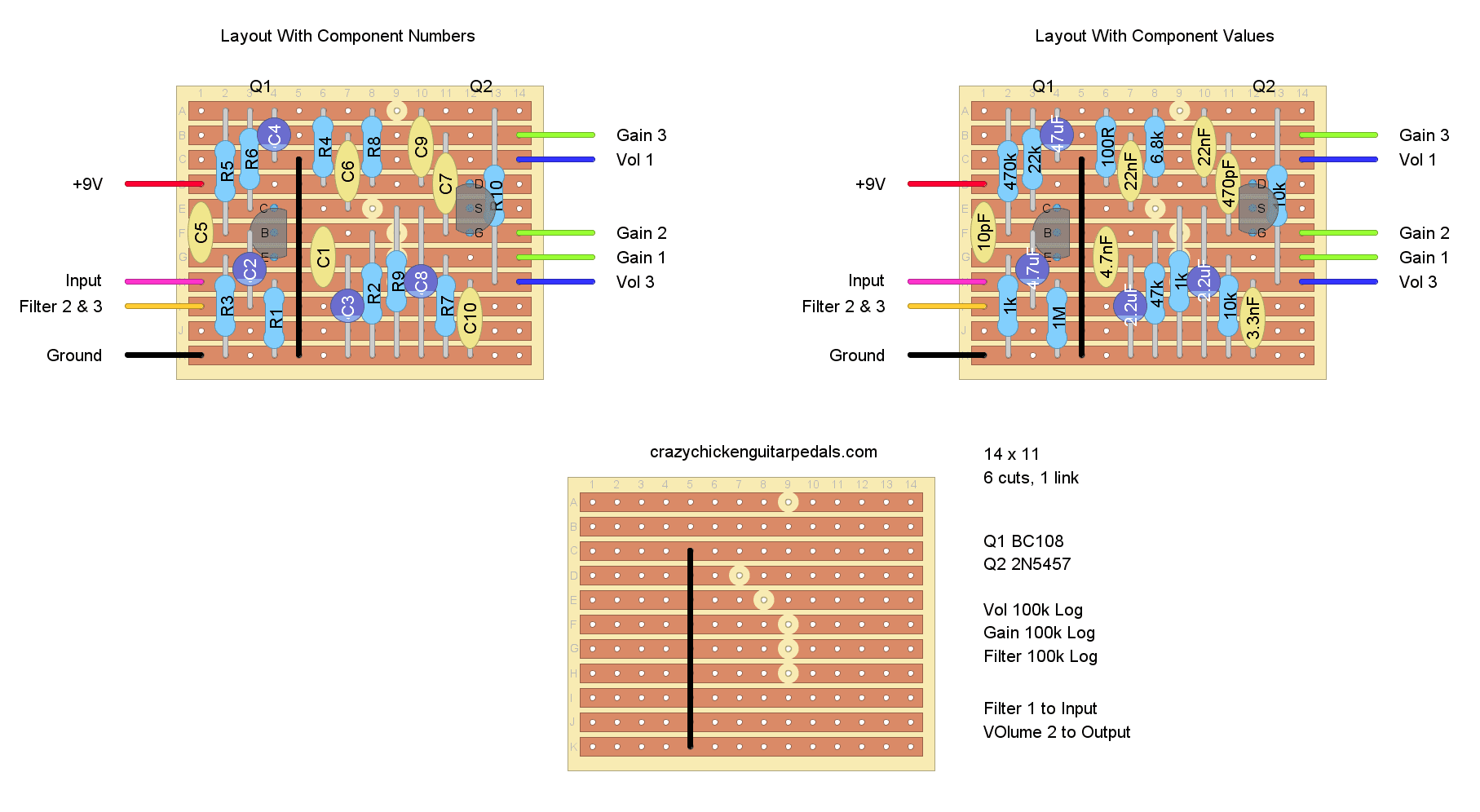Here’s a fun pedal build project: Lumpy’s Tone Shop Lemon Drop. This pedal actually comes in a variety of names though. I wasn’t familiar with Lumpy’s Tone Shop, but found the stripboard layout on Tagboard Effects. In looking into this pedal, it looks like Lumpy’s Tone Shop is now going by the name Electric Majik, and in the past this pedal has also been called the Series 7 Overdrive. But whatever you call it, it’s a fun build and it sounds great!
With the changes in mind, this is the older version of the pedal with just the three knobs: filter (tone), gain, and volume. The current version of this pedal includes treble and pre-gain knobs as well.
According to Electric Majik/Lumpy’s Tone Shop, the Lemon Drop is a fuzzy overdrive that’s inspired by the sound and tone of old Vox 4 Series and Vox 7 Series amps. These were 60’s era amps that were used by the likes of the Beatles and Led Zeppelin. Vox amps sound great (and so does this pedal), so you should get a nice vintage sound out of this thing; a nice natural overdrive different from something like an Ibanez Tube Screamer, which sounds great, but isn’t designed to sound like anything in particular. Basically, what I’m saying, is if you’re trying to get some classic Vox sounds, the Lemon Drop is the way to go.
Ibanez Tube Scream (TS808) Wiring Schematic
As always, I’m including the schematic here as well as the stripboard layout below. You may just want to build the pedal, but if you’re interested in how it works, the schematic will help you. Hunting down the schematic for this one was difficult, but it lines up with the stripboard layout I found, so I’m confident it’s correct.
Here’s the wiring diagram:
Click on the schematic to enlarge it.
And here’s the bill of materials.
| Notes | ||
|---|---|---|
| R1 | 1M | |
| R2 | 47K | |
| R3 | 1K | |
| R4 | 100 | |
| R5 | 470K | |
| R6 | 22K | |
| R7 | 10K | |
| R8 | 6.8K | |
| R9 | 1K | |
| R10 | 10K | |
| C1 | 4.7nF | |
| C2 | 4.7uF | Polarised |
| C3 | 2.2uF | Polarised |
| C4 | 47uF | Polarised |
| C5 | 10pF | |
| C6 | 22nF | |
| C7 | 470nF | |
| C8 | 2.2uF | Polarised |
| C9 | 22nF | |
| C10 | 3.3nF | |
| Q1 | BC108 | |
| Q2 | 2N5457 | |
| P1 | 100K Log | Filter potentiometer |
| P2 | 100K ALog | Gain potentiometer |
| P3 | 100K Log | Volume potentiometer |
| Jacks, power supply, etc. | Don't Forget | The stuff you usually use. |
Sorry that the symbol for Q2 is for an bipolar junction transistor and not a JFET. For some reason the software that I used to make the schematics doesn’t have an option for JFET transistors, which is kind of weird, but it is what it is.
Although there’s quite a few more components here than for some of the simple guitar pedal builds I’ve done for this site, it’s still a relatively straightforward layout when you strip away some of the filters and things like decoupling capacitors.
With that in mind, there’s not a lot I’d suggest touching or changing on this schematic, unless you’re brave. It looks quite well balanced and thought out. However, you may want to replace R6 or R8 with trim pots to adjust the gain of each of the transistors and see how it effects overdrive, fuzz, and general tone. Basically, how far can you push this thing?
Lumpy’s Tone Shop Lemon Drop Stripboard Layout
As mentioned, I hadn’t heard of Lumpy’s Tone Shop (or Electric Majic) before, but saw this layout on Tagboard Effects and thought it was interesting.
To that end, this is Tagboard’s stripboard layout without any modifications. I’ve recreated it here with both the components number in line with the schematic as well as the components with values. If you just want to build the pedal, follow the stripboard layout with the values, if you want to make modifications, you can see what you’re changing and where on the schematic.
The one thing to be aware of here is that leg 1 of the filter pot goes to the input. I discuss this in the next section of this article.
Here’s the Lemon Drop stripboard layout:
Click on the diagram to enlarge it.
My Experience Building The Lemon Drop
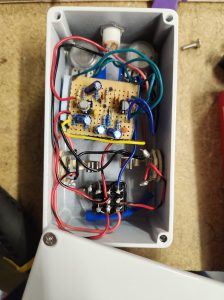 As mentioned, the biggest thing to point out is that there’s the standard input wire and also leg 3 of the filter potentiometer going to input. For my build, I found it easiest to wire these both into the footswitch. I used standard footswitch wiring, of course, it’s just that the effect input lug had two wires coming into it.
As mentioned, the biggest thing to point out is that there’s the standard input wire and also leg 3 of the filter potentiometer going to input. For my build, I found it easiest to wire these both into the footswitch. I used standard footswitch wiring, of course, it’s just that the effect input lug had two wires coming into it.
The other thing to be careful of is the cut locations. In the Tagboard layout, they don’t present a blank layout to clearly see the cuts, and I nearly missed one.
Internal wiring has never been my strong suit, and I found this one particularly fiddly. Maybe it was the extra wire, or maybe I wasn’t thinking ahead, but I think I was particularly messy this time around. It sounds good and it works though, and no one is going to see it once I close it up, so it doesn’t matter too much.
How Does The Lemon Drop Sound?
Lumpy’s Tone Shop describes this pedal as a “fuzzy overdrive” and they’re right. In a lot of ways it sounds like a distortion, but it really responds well to attack (here’s an article on the differences between overdrive and distortion if you need it).
There’s a good baseline fuzz to the sound of this pedal, even with the gain turned all the way down. As the gain is turned up, you get more gain (obviously), which is where the overdrive sounds begin to come in. However, the pedal doesn’t allow for all that much gain actually. That is, the Lemon Drop isn’t some way huge screaming overdrive, it’s there to add flavour and interest to the sound. It’s a vintage sound of a good amp getting pushed to its limits. And I think it sounds good!
As mentioned, this pedal is modeled on old Vox Series 4 and Series 7 amps and, if that’s a sound you like, you’ll be very pleased with the sound of this pedal.
Related posts:
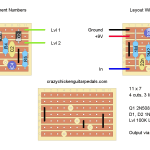 Lovepedal Champ On Stripboard
Lovepedal Champ On Stripboard
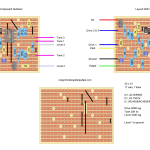 Ibanez Tube Screamer (TS808) On Stripboard
Ibanez Tube Screamer (TS808) On Stripboard
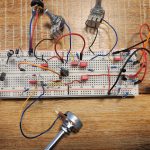 Building And Modding A Tube Screamer On A Breadboard
Building And Modding A Tube Screamer On A Breadboard
 Escobedo Harmonic Jerculator On Stripboard
Escobedo Harmonic Jerculator On Stripboard
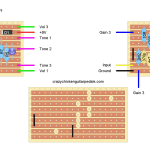 Lovepedal Purple Plexi On Stripboard
Lovepedal Purple Plexi On Stripboard
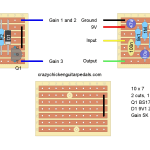 ZVEX Super Hard On On Stripboard
ZVEX Super Hard On On Stripboard
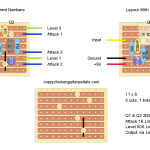 Vox Tone Bender On Stripboard
Vox Tone Bender On Stripboard
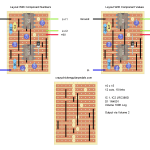 EarthQuaker Devices Acapulco Gold On Stripboard
EarthQuaker Devices Acapulco Gold On Stripboard
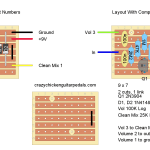 Greer Amps Green Giant On Stripboard
Greer Amps Green Giant On Stripboard
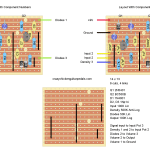 Catalinbread Karma Suture On Stripboard
Catalinbread Karma Suture On Stripboard

